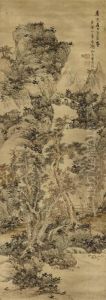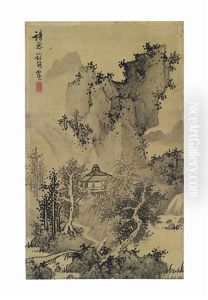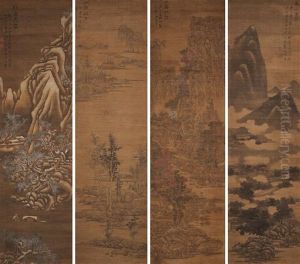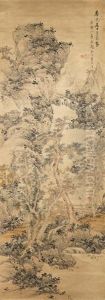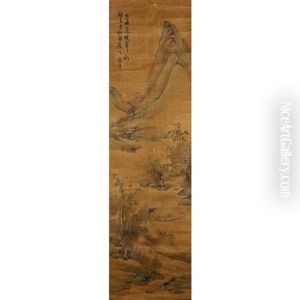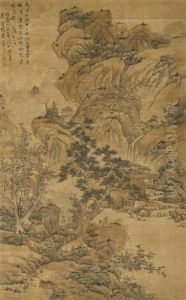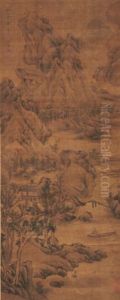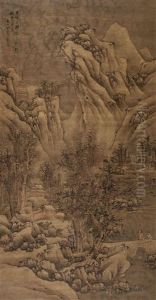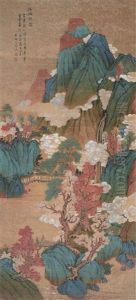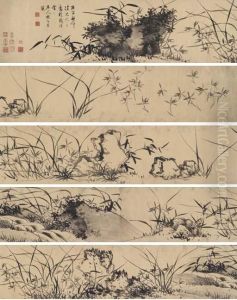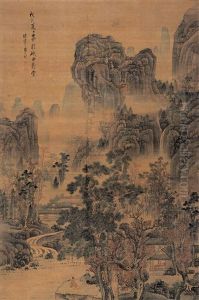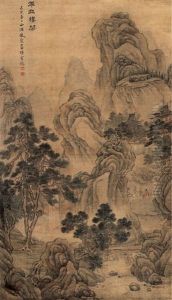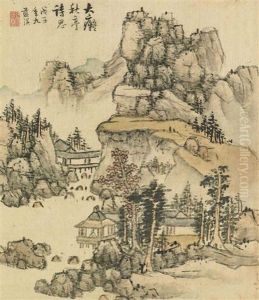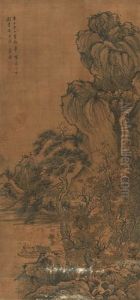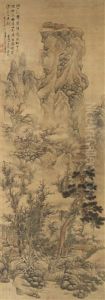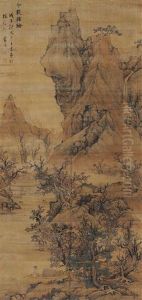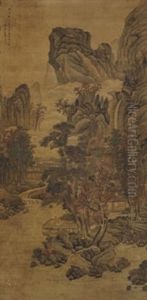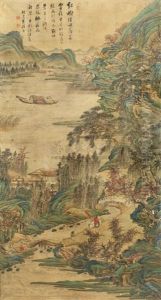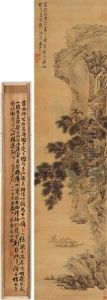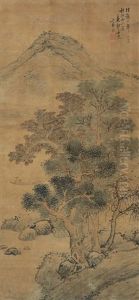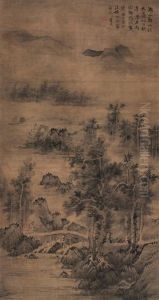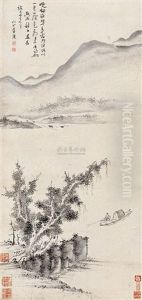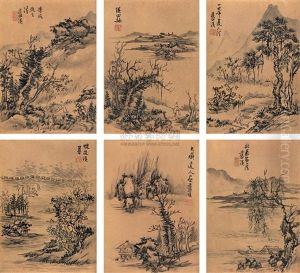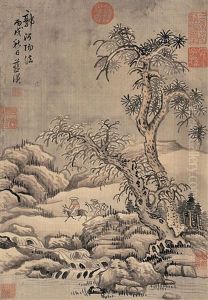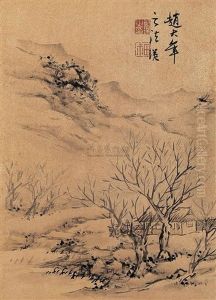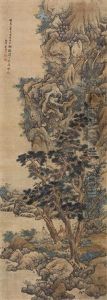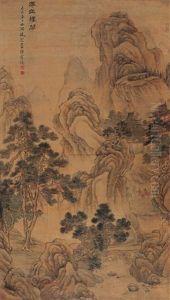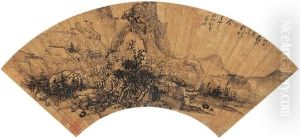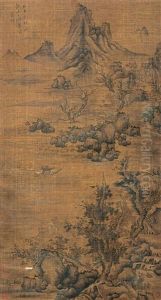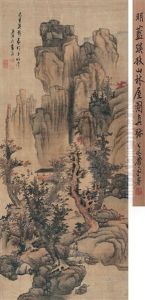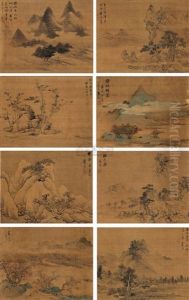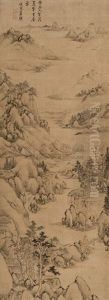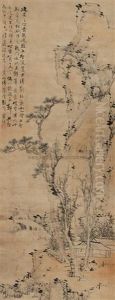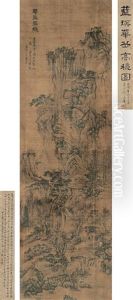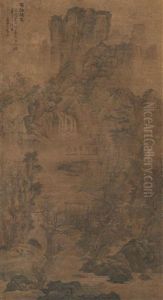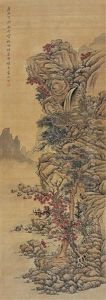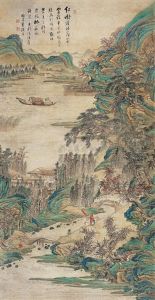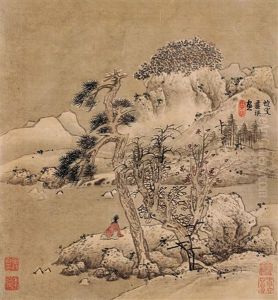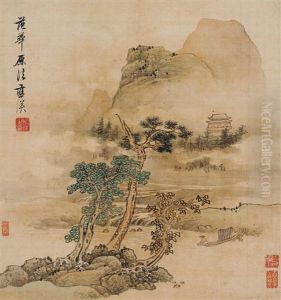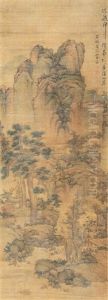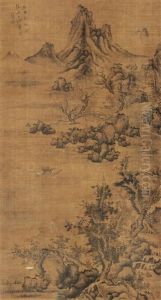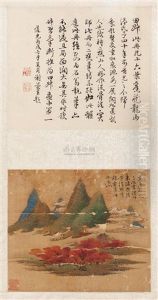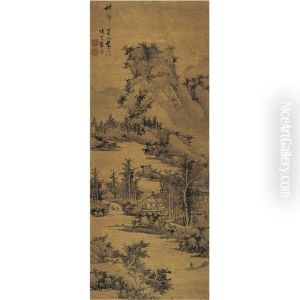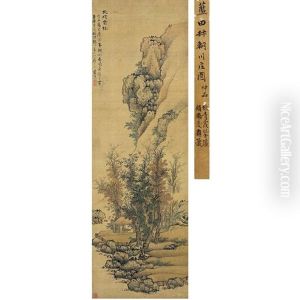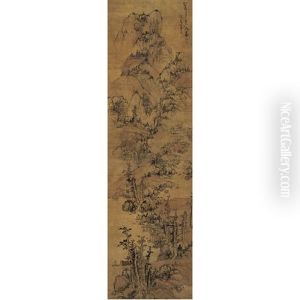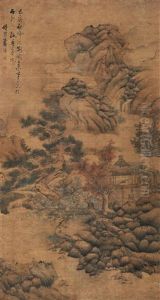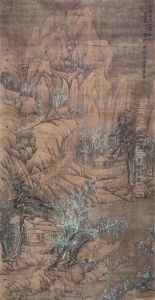Lan Ying Paintings
Lan Ying (蓝瑛) was a Chinese painter during the late Ming and early Qing dynasties. Born in 1585 in Hangzhou, which was part of the Zhejiang province, he became one of the leading figures in the painting community of his time. His style is often categorized within the Wenrenhua (literati painting) tradition, which was associated with the scholar-official class, and emphasized personal expression and technical virtuosity.
Lan Ying was adept in landscapes, figure, and bird-and-flower painting, showing a remarkable versatility across different genres. He was especially known for his landscape paintings, which often reflected the classical styles of earlier masters like Huang Gongwang and Wu Zhen, both of whom were part of the revered 'Four Masters of the Yuan Dynasty.' Lan Ying's works are characterized by their dynamic brushwork and richly detailed compositions. His landscapes often convey a sense of grandeur and deep space, with mountains, waterfalls, and architecture rendered in precise yet expressive strokes.
Throughout his life, Lan Ying witnessed significant political and social changes, including the fall of the Ming dynasty and the establishment of the Qing dynasty by the Manchus. Despite the turmoil, he managed to maintain a successful career and was prolific throughout his life. He founded the 'Lan School' of painting, which influenced many artists and continued to have a legacy in Chinese art history.
Lan Ying's paintings were highly sought after during his lifetime and he enjoyed the patronage of wealthy scholars, officials, and members of the gentry. His work was not only appreciated in China but also in Japan, where his style had a considerable impact on the development of local painting traditions.
After a long and prominent career, Lan Ying died in 1664. His artworks remain highly valued and are preserved in numerous museum collections around the world, including the National Palace Museum in Taipei and the Metropolitan Museum of Art in New York. Lan Ying's contributions to the art of the Ming dynasty have cemented his status as one of the most important painters in the history of Chinese art.

